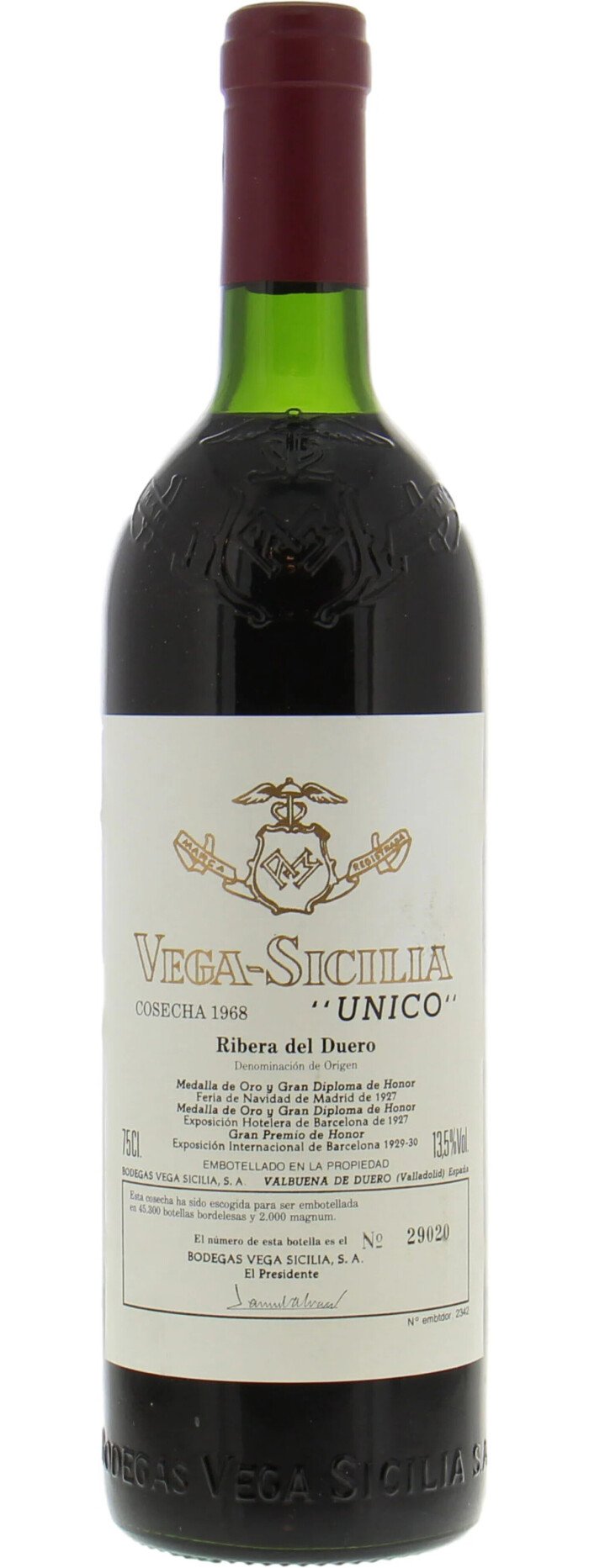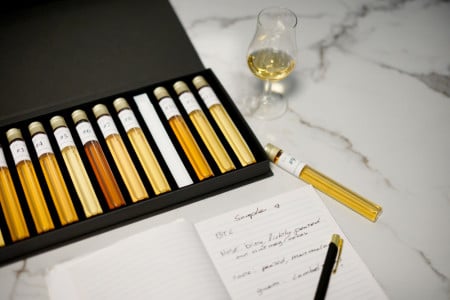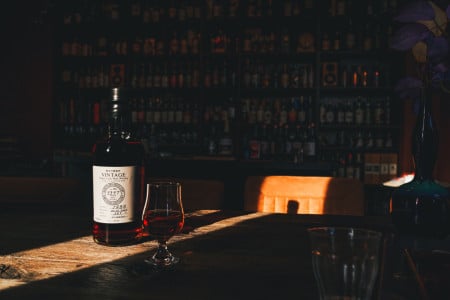The most famous winery of Spain is without any doubt, Vega Sicilia in Ribera del Duero. Even though there are many other high quality and highly rewarded estates in Spain from the Rioja in the north to the southern Andalucia, the history of Vega Sicilia and the consistency of quality winemaking makes this estate exceptional.
History
The estate and vineyards which are now known as Vega Sicilia were founded in 1864 by Eloy Lecanda y Chaves who inherited the domaine in 1859. Tempranillo (Tinto Fino) was at that time the commonly used grape. As a Spanish winemaker he visited Bordeaux to experience the techniques of fine wine making and when he returned he brought vines of typical Bordeaux grapes like Cabernet Sauvignon, Merlot, Carmenere and Malbec for use at this estate. In the 1880’s the estate was known as Bodegas Lecanda.
The introduction of Bordeaux grapes wasn’t special at that time as many Bordeaux winemakers went to Spain, due to the outbreak of Phylloxera. Over time the tempranillo grape proved to be the better choice in Rioja, so naturally the use of Bordeaux grapes decreased.
Eloy Lecanda y Chaves didn't get the chance to enjoy the coming success of what is now the most famous estate in Spain. The estate experienced hard times financially and even used the grapes to make brandy. Eloy Lecanda y Chaves died in 1894.
The Herrero family took over the estate at the start of the 20th century and called it Vega Sicilia. The estate was rented by Cosme Palacio, a negociant who used the grapes to increase wine supply as the negative effects of Phylloxera were still very present in Nothern Spain. It was winemaker Domingo Garramiola Txomin who changed the winemaking process by using techniques common in Bordeaux, like using small Barriques, longer maturation and blending Tempranillo and Bordeaux grapes. Unico was born in 1915 as the first vintage and still at this date regarded as one of the best wines in the world. Bordeaux grapes are still an important component of Unico wines today.
The network of the Herrero family made it possible that Vega Sicilia and its iconic Unico wine became the most prominent and well known Spanish wine. However, in the second half of the 20th century the quality of the wines declined as the estate was bought and sold by new owners. The reversal of fortune took place in 1982 as the Alvarez family bought Vega Sicilia, invested strongly and brought back the quality and reputation of Vega Sicilia wines.
The name Vega Sicilia
There are no written records or indisputable proof as to where the name Vega Sicilia came from. It is believed that the word Vega comes from the green vegetation that grows along the riverbank of the Duero while Sicilia refers to Santa Cecilia, the patron saint of musicians where several villages in Castile and León (Castilla y León) are named after.
The estate
Vega Sicilia is almost like a village and community on its own. It has a school, chapel and houses where many of the workers and their families live. Some of the families have already worked there for a couple of generations, dating back to when Domingo Garramiola Txomin was still the winemaker.
The estate is located between Panafiel and Tudela where Pingus and Pesquera also reside. It is also known as the golden mile …
The vineyards
The vineyards of Vega Sicilia are located up to hights of 700 metres, and some vines even date back to pre-phylloxera times which are over 100 years old. The minimum age of the vines used for winemaking is 10 years old, the average age is 35 years. For Unico vines of 60-65 years are used, the younger vines are used for the Valbuena.
The climate is continental and the combination of higher altitudes means that temperatures can vary a lot. This results in high ripeness of the grapes, that make for a good balance in tannins, alcohol and acidity.
Vega Sicilia owns 1000 hectares, 210 hectares are used for the viticulture. The vines are divided into three where used varieties grow: Tempranillo, Cabernet Sauvigon and Merlot. From the 210 hectares, 70 hectares are used for making Alion and 140 are used for the Valbuena and Unico. The vineyards are divided into 52 different plots, based on grape variety, the age of the vine and of the 19 soil taxonomic classifications.
Vega Sicilia Unico
It is the Vega Sicilia flagship and the style remains more or less the same as it was in the early 20th century. Both Tempranillo and Cabernet Sauvignon are used, though the proportion of Cabernet has decreased over the years (recent vintages <10%).
The Unico vines are located just in between the slopes from the wasteland an the Alluvial plain. The soil consist of colluvial deposits from the hillside with some small portions of limestone. Also deeper down you can find Quartz gravel in a sandy main soil.
Unico is made in controlled fermentation using native yeast in wooden tanks. Malolactic fermentation takes place in wood.
The wines are aged for 10 years in wood and bottle using American and French wood barrels: new and used 225-litre barrels and 20,000-litre vats. Normally the Unico spends 6 years in wood and 4 in the bottle.
If there is not enough wine produced with ‘Unico’-quality, no Unico will appear on the market and the wines are used in for example Valbuena, like vintages: 1963, 1971, 1988, 1992, 1993, 1997, 2001.
Exceptional vintages of Unico are amongst others: 1942, 1953, 1962, 1964, 1968, 1970, 1994, 1998, 2006, 2009, 2010.
Vega Sicilia Reserva Especial
This is the top cuvee of Vega Sicilia and made from the best Unico Vintages. Usually a blend of 3 vintages, in some cases 2 vintages.
Since 2001 the labels of the Reserva Especial contain the Unico vintages where the blend is made of, but before that it was always a huge guess and almost impossible to determine. In those days the label contained a release year or a lot number. If you were lucky.
Vega Sicilia did not inform its consumers what the blend was. In September 1990, Christie's London auctioned some bottles of Reserva Especial dating back to 1941. The bottles came from the cellar of Vega Sicilia itself. The content was described as "the Pinnacle of Vega-Sicilia," but the vintages in the blend were not revealed. Vega Sicilia just described it as a "a blend of several vintages, some of considerable age."
In the past many profound wine tasters organized tasting with Reserva Especial and thought they were informed about the right vintages used in the blend, but ended up having it all wrong.
Luckily some wine afficionados, with the help from a private 2004 fax from the estate itself, could unravel the blend's components back to the release of Reserva Especial in 1990. And this knowledge was very helpful! At Best of Wines we sourced a case of Reserva Especial from a private cellar with release date 1990. It is a blend of 1968 and 1970, two stellar vintages. We rated it 10/10.
Tasting note: Vega Sicilia Reserva Especial release year 1990
A blend of 1968 and 1970. Are these wines 50+ years old? Almost impossible.
The color is red with an orange rim. Lighter colored that Unico 1968. It needs 5 minutes to open up (some metallic hints). Clearly Cabernet nose, however the Cabernet component used in this blend will be less than 25%. Lots of fruit, black fruit, cassis. Some oak, earth and sweetness. After taking the first sip nobody talked. We looked at each other and everybody was thinking. Both Unico 1968 and 1970 are top 25 wines ever, and this blend is even better. Extremely fat, concentrated and so complex. The aromas changed the first 5 minutes constantly. Perfectly balanced, so elegant. A silky road alongside a discovery tour of scent and taste. Did I say Top 10-25? Make that Top 10. BOW 10/10.
Johan Cruyff told us once that when he was the coach of Barcelona and they played against Deportivo la Coruno, they received a present containing a case of Vega Sicilia Unico. Now we understand why.
Alion and Valbuena
Besides the flagship Unico and Reserva Especial two more wines are bottled under the Vega Sicilia Logo: Alion and Valbuena.
Both are high quality wines wines with and exceptional price-quality.
Pintia and Macan
These wines do not come from Ribera del Duero but from Rioja (Macan) in cooperation with Benjamin de Rothschild and Toro (Pintia).
Both are also nice quality wines for a more moderate price.





